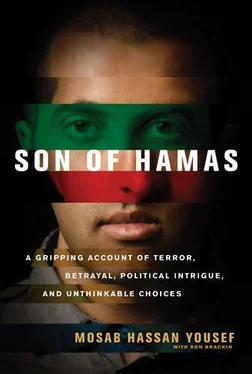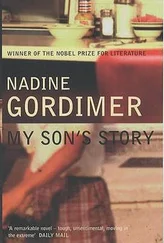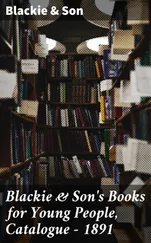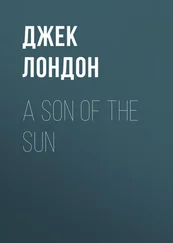My father and the other West Bank leaders disagreed. They were not ready to repeat the mistakes of Egypt and Syria, where the Brotherhood had attempted coups and failed. In Jordan, they argued, our brothers do not fight. They participate in elections and have a strong influence on society. My father did not oppose violence, but he didn’t think his people were in any position to take on the Israeli military.
For several years, the debate within the Brotherhood continued and the grassroots pressure for action increased. Frustrated with the inaction of the Muslim Brotherhood, Fathi Shaqaqi had founded Palestinian Islamic Jihad in the late 1970s. But even so, the Muslim Brotherhood was able to maintain its nonviolent stance for another decade.
In 1986, a secret and historic meeting took place in Hebron, just south of Bethlehem. My father was there, though he didn’t tell me about it until many years later. Contrary to some inaccurate historical accounts, the following seven men were present at this meeting:
• a wheelchair-bound Sheikh Ahmed Yassin, who would become the spiritual leader of the new organization
• Muhammad Jamal al-Natsheh from Hebron
• Jamal Mansour from Nablus
• Sheikh Hassan Yousef (my father)
• Mahmud Muslih from Ramallah
• Jamil Hamami from Jerusalem
• Ayman Abu Taha from Gaza
The men who attended this meeting were finally ready to fight. They agreed to begin with simple civil disobedience—throwing stones and burning tires. Their objective was to awaken, unify, and mobilize the Palestinian people and make them understand their need for independence under the banner of Allah and Islam. [1] No one has ever had this information before. In fact, the record of history is already filled with numerous inaccuracies about the day that Hamas was born as an organization. For example, Wikipedia inaccurately claims that “Hamas was created in 1987 by Sheikh Ahmed Yassin, Abdel Aziz al-Rantissi and Mohammad Taha of the Palestinian wing of Egypt’s Muslim Brotherhood at the beginning of the First Intifada….” This entry is accurate regarding only two of the seven founders, and it is off by a year. See http://en.wikipedia.org/wiki/Hamas (accessed November 20, 2009). MidEastWeb says, “Hamas was formed about February 1988 to allow participation of the brotherhood in the first Intifada. The founding leaders of Hamas were: Ahmad Yassin, ‘Abd al-Fattah Dukhan, Muhammed Shama’, Ibrahim al-Yazuri, Issa al-Najjar, Salah Shehadeh (from Bayt Hanun) and ‘Abd al-Aziz Rantisi. Dr. Mahmud Zahar is also usually listed as one of the original leaders. Other leaders include: Sheikh Khalil Qawqa, Isa al-Ashar, Musa Abu Marzuq, Ibrahim Ghusha, Khalid Mish’al.” This is even less accurate than the Wikipedia entry. See http://www.mideastweb.org/hamashistory.htm (accessed November 20, 2009).
Hamas was born. And my father climbed a few more rungs toward the top of the ladder of Islam.
Chapter Four
THROWING STONES
1987–1989
Hamas needed a move—any move—that could serve as a justification for an uprising. That move came in early December 1987, even though it was all a tragic misunderstanding.
In Gaza, an Israeli plastics salesman named Shlomo Sakal was stabbed to death. Just a few days later, four people from Gaza’s Jabalia refugee camp were killed in a routine traffic accident. Word spread, however, that they had been killed by Israelis in revenge for Sakal’s murder. Riots broke out in Jabalia. A seventeen-year-old threw a Molotov cocktail and was shot dead by an Israeli soldier. In Gaza and the West Bank, everyone took to the streets. Hamas took the lead, fueling the riots that became a new style of fighting in Israel. Children threw stones at Israeli tanks, and their pictures appeared on the covers of magazines throughout the international community the same week.
The First Intifada had begun, and the Palestinian cause became world news. When the intifada started, everything changed at our cemetery-playground. Every day, more bodies were arriving than ever before. Anger and rage stalked hand in hand with grief. Palestinian crowds began to stone Jewish people who had to drive past the cemetery to get to the Israeli settlement a mile away. Heavily armed Israeli settlers killed at will. And when Israel Defense Forces (IDF) arrived on the scene, there was more shooting, more wounding, more killing.
Our house was right in the center of all the chaos. Many times, the water storage tanks on our roof were shredded by Israeli bullets. The dead bodies the masked feda’iyeen, or freedom fighters, brought to our cemetery were no longer only old people. Sometimes they were still-bleeding corpses on stretchers, not washed, not wrapped in winding sheets. Each martyr was buried immediately so no one would be able to take the bodies, steal the organs, and return the corpses to their families stuffed with rags.
There was so much violence that I actually became bored during those rare seasons when things were quiet. My friends and I started throwing stones too—to stir things up and to be respected as fighters in the resistance. We could see the Israeli settlement from the cemetery, high up on top of the mountain, surrounded by a high fence and guard towers. I wondered about the five hundred people who lived there and drove new cars—many of them armored. They carried automatic weapons and seemed to be free to shoot anyone they wanted. To a ten-year-old kid, they seemed like aliens from another planet.
One evening just before sunset prayer, some friends and I hid by the road and waited. We decided to aim at a settlers’ bus because it was a bigger target than a car and would be easier to hit. We knew the bus came every day at the same time. As we waited, the familiar strains of the imam chanted over the loudspeakers:
“Hayya ‘alās-salāh”
[Make haste toward worship]
When we finally heard the low rumble of a diesel engine, we each picked up two stones. Though we were hidden and couldn’t see the street, we knew exactly where the bus was by the sound. At just the right moment, we jumped up and let our ammunition fly. The unmistakable sound of stone striking metal assured us that at least a few of our projectiles had found their target.
But it wasn’t the bus. It was a big military vehicle filled with edgy, angry Israeli soldiers. We quickly ducked back into our hiding place in the ditch as the vehicle came to a stop. We couldn’t see the soldiers, and they couldn’t see us. So they just started shooting into the air. They continued to fire aimlessly for a couple of minutes, and ducking low, we quickly made our escape into a nearby mosque.
Prayer had already begun, but I don’t think anybody there was really focused on what they were saying. Everyone was listening to the stutter of automatic weapons just outside and wondering what was going on. My friends and I slipped into line in the last row, hoping no one would notice. But when the imam had finished his prayers, every angry eye turned toward us.
Within seconds, IDF vehicles began screeching to a halt in front of the mosque. Soldiers poured into the room, forcing us all outside and ordering us to lie facedown on the ground as they checked our IDs. I was the last one out and terrified that the soldiers knew I was responsible for all the trouble. I thought surely they would beat me to death. But no one paid any attention to me. Maybe they figured a kid like me wouldn’t have had the nerve to throw rocks at an IDF vehicle. Whatever the reason, I was just glad they weren’t targeting me. The interrogation went on for hours, and I knew that many of the people there were angry at me. They may not have known exactly what I had done, but there could be no doubt that I had triggered the raid. I didn’t care. I was actually exhilarated. My friends and I had challenged the might of the Israeli arm and come out unscathed. The rush was addictive, making us even bolder.
Читать дальше












